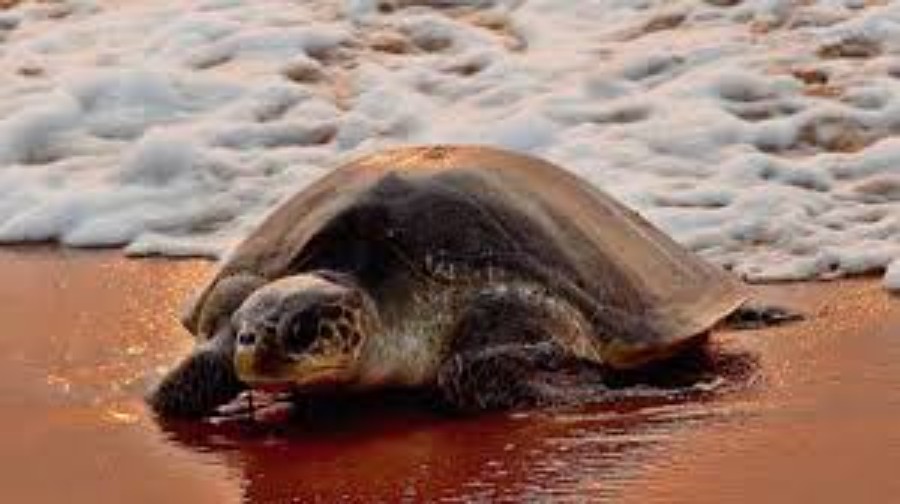Under Operation Olivia, the Indian Coast Guard successfully safeguarded a record 6.98 lakh Olive Ridley turtles during their mass nesting at the Rushikulya river mouth in Odisha.
ABOUT OPERATION OLIVIA
Operation Olivia is a prominent marine conservation effort conducted annually by the Indian Coast Guard (ICG) between November and May. Its primary aim is to protect Olive Ridley turtles during their critical mass nesting period.
Key Stakeholders:
The initiative is spearheaded by the Indian Coast Guard in partnership with State Pollution Control Boards, non-governmental organizations (NGOs), and local fishing communities.
Primary Goals:
-
Curb illegal fishing activities during the turtle breeding season.
-
Safeguard the nesting habitats along major Odisha beaches, including Gahirmatha, Rushikulya, and Devi.
-
Encourage the adoption of Turtle Excluder Devices (TEDs) among fishermen to minimize accidental turtle deaths.
Major Highlights:
-
Since its inception, the operation has carried out over 5,387 surface patrols and 1,768 aerial surveillance missions.
-
Emphasis on community engagement through awareness campaigns and partnerships with NGOs via Memoranda of Understanding (MoUs).
-
Deployment of advanced surveillance technologies and strong inter-agency cooperation to ensure effective protection and enforcement.
ABOUT OLIVE RIDLEY TURTLES:
Scientific Name: Lepidochelys olivacea
Conservation Status: Classified as Vulnerable by the IUCN
Habitat and Range:
Olive Ridley turtles inhabit warm tropical waters across the Pacific, Indian, and Atlantic Oceans. In India, significant nesting grounds are located in Odisha (Gahirmatha, Rushikulya, and Devi beaches), as well as in Tamil Nadu, Andhra Pradesh, and the Andaman & Nicobar Islands.
Distinctive Characteristics:
These are the smallest of all sea turtle species, typically weighing up to 45 kilograms. They are recognized by their olive-colored, heart-shaped shells.
Nesting Behavior:
Olive Ridleys are known for their unique mass nesting phenomenon called arribada, where thousands come ashore to lay eggs simultaneously, primarily between November and April.
Diet:
They are omnivorous, feeding on a variety of marine organisms including jellyfish, molluscs, crustaceans, and algae.
Conservation Status:
- IUCN: Vulnerable
- CITES: Appendix I
- Wildlife (Protection) Act,1972: Schedule I



